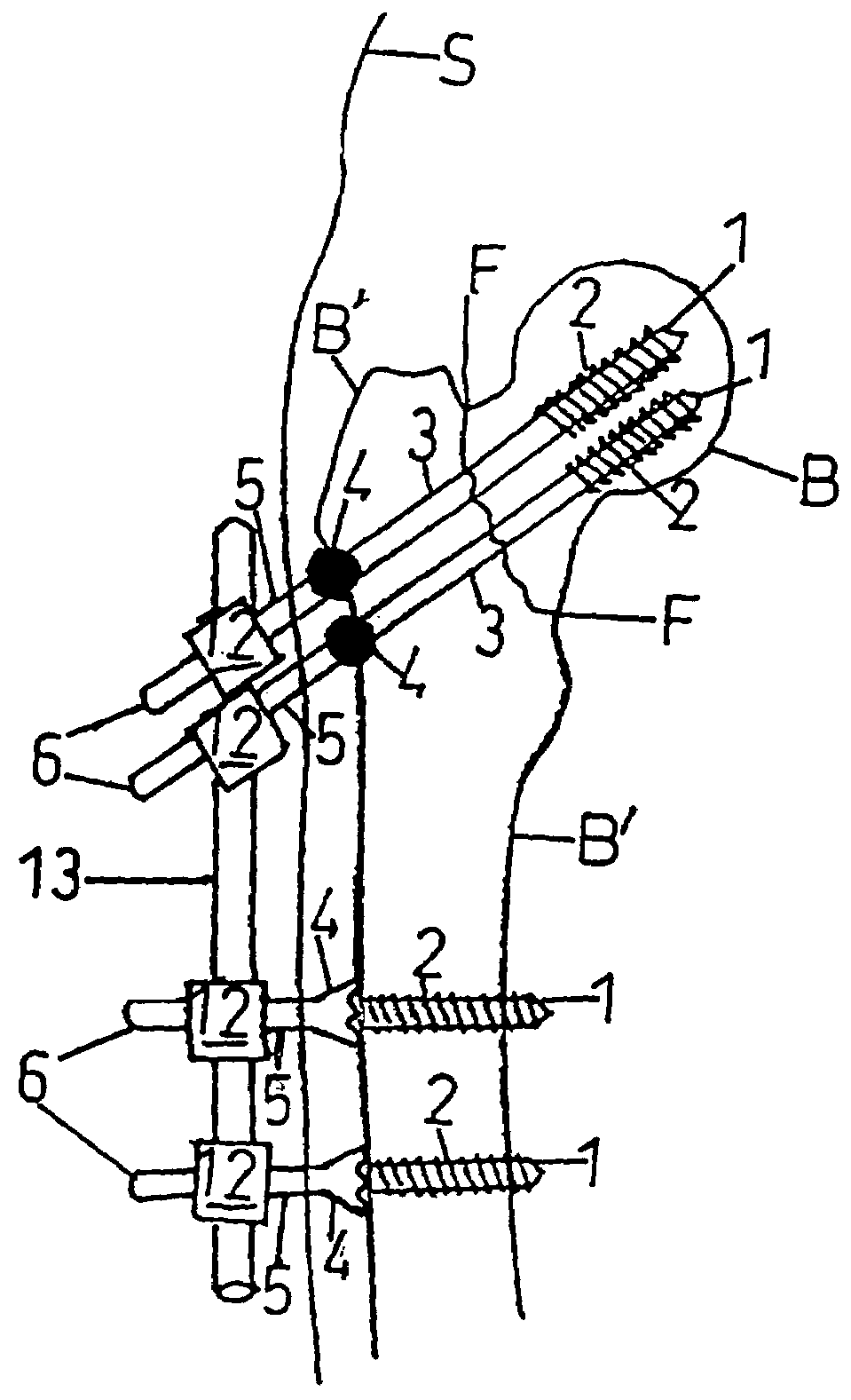Renew compression screw
a technology of compression screw and screw body, applied in the field of orthopedics and trauma, to achieve the effect of preserving and augmenting the functions of primary bone implant and enhancing the stability and durability of the implan
- Summary
- Abstract
- Description
- Claims
- Application Information
AI Technical Summary
Benefits of technology
Problems solved by technology
Method used
Image
Examples
Embodiment Construction
[0082]FIG. 1 is one embodiment of the lag screw implant. In the lag mode it is mainly in tension along its axis and other force vectors are neutralized by the basic construct. It comprises:
[0083]1 being the tip at the first end, with guide wire 7 in the central canal. The tip shown is self tapping, but optionally a non-self tapping tip may be used.
[0084]2 is the short threaded section at the first end, the thread not extending to the head 4.
[0085]3 being the smooth screw shaft section meant for gliding through the drill hole in the fragment nearer to head, allowing lag screw compression.
[0086]4 is the spherical head for engaging a countersunk surface of the fragment nearer to head. The head may be integral with the rod or may be mobile for fixation at a desired level to rod 5.
[0087]Such refixation is provided by means of a transverse screw through the head and drive shaft possessing holes 15, at intervals for screw passage.
[0088]5 is the unthreaded drive shaft, which serves for driv...
PUM
 Login to View More
Login to View More Abstract
Description
Claims
Application Information
 Login to View More
Login to View More - R&D
- Intellectual Property
- Life Sciences
- Materials
- Tech Scout
- Unparalleled Data Quality
- Higher Quality Content
- 60% Fewer Hallucinations
Browse by: Latest US Patents, China's latest patents, Technical Efficacy Thesaurus, Application Domain, Technology Topic, Popular Technical Reports.
© 2025 PatSnap. All rights reserved.Legal|Privacy policy|Modern Slavery Act Transparency Statement|Sitemap|About US| Contact US: help@patsnap.com



